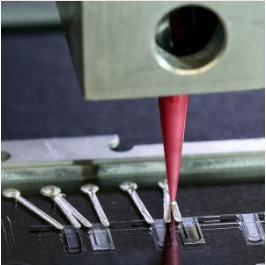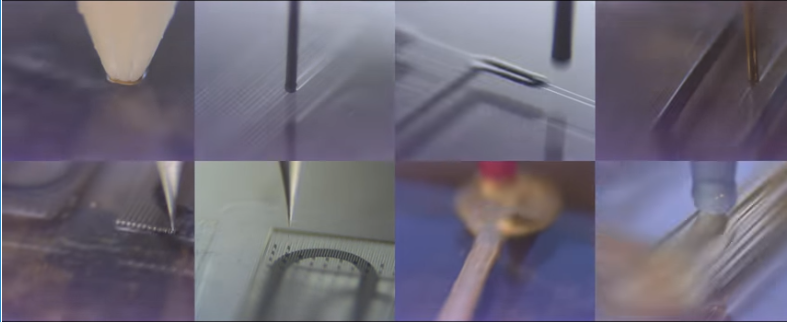Harvard Researchers Create 3D Printed Heart-on-a-Chip, Potentially Eliminating Need for Animal Testing in the Future
 I’ve always hated the idea of animal testing. I try to buy products that don’t test on animals, though sometimes it’s hard to find reliable information. When it comes to animal testing for medical purposes, however, I understand that it’s necessary for the development of drugs and technologies that may eventually save the lives of thousands of human beings – but thanks to 3D printing, even medical animal testing may soon become a thing of the past.
I’ve always hated the idea of animal testing. I try to buy products that don’t test on animals, though sometimes it’s hard to find reliable information. When it comes to animal testing for medical purposes, however, I understand that it’s necessary for the development of drugs and technologies that may eventually save the lives of thousands of human beings – but thanks to 3D printing, even medical animal testing may soon become a thing of the past.
A recent technology that has emerged as an alternative to animal testing is known as “organ-on-a-chip” technology. Organs-on-chips, aka microphysiological systems, are small cell culture chips that mimic the structure and function of tissue, allowing researchers to study the effects of drugs on lungs, hearts, kidneys and other organs without needing an actual organ to perform tests on. The issue with the technology thus far, however, is that it’s expensive and time-consuming to collect the data necessary for the chips and then to fabricate them.
 Typically, organs-on-chips are created in a complicated, multiple-step lithographic process, while collecting data requires the use of microscopy or high-speed cameras. Researchers at Harvard University, however, have developed a new method for fabricating organs-on-chips: 3D printing. A recently published paper entitled “Instrumented cardiac microphysiological devices via multimaterial three-dimensional printing” describes how a research team created the first-ever entirely 3D printed organ-on-a-chip – a heart – with integrated sensing.
Typically, organs-on-chips are created in a complicated, multiple-step lithographic process, while collecting data requires the use of microscopy or high-speed cameras. Researchers at Harvard University, however, have developed a new method for fabricating organs-on-chips: 3D printing. A recently published paper entitled “Instrumented cardiac microphysiological devices via multimaterial three-dimensional printing” describes how a research team created the first-ever entirely 3D printed organ-on-a-chip – a heart – with integrated sensing.
“This new programmable approach to building organs-on-chips not only allows us to easily change and customize the design of the system by integrating sensing but also drastically simplifies data acquisition,” said Johan Ulrik Lind, postdoctoral fellow at the Harvard John A. Paulson School of Engineering and Applied Sciences (SEAS) and a researcher at the Wyss Institute for Biologically Inspired Engineering at Harvard University.
The team developed six printable inks that integrated soft strain sensors into the micro-architecture of the tissue. They then 3D printed the materials into a cardiac microphysiological device, aka a heart-on-a-chip, with integrated sensors in one continuous procedure.
“We are pushing the boundaries of three-dimensional printing by developing and integrating multiple functional materials within printed devices,” said Jennifer Lewis, Hansjorg Wyss Professor of Biologically Inspired Engineering and a Core Faculty Member at the Wyss Institute. “This study is a powerful demonstration of how our platform can be used to create fully functional, instrumented chips for drug screening and disease modeling.”
The heart-on-a-chip contains several wells that each contain separate tissues and integrated sensors, which allows the researchers to study multiple cardiac tissues at one time. The Harvard team has already carried out several drug studies as well as longer-term studies of gradual changes in the contractile stress of cardiac tissue, which can take place over the course of several weeks.
“Researchers are often left working in the dark when it comes to gradual changes that occur during cardiac tissue development and maturation because there has been a lack of easy, non-invasive ways to measure the tissue functional performance,” said Lind. “These integrated sensors allow researchers to continuously collect data while tissues mature and improve their contractility. Similarly, they will enable studies of gradual effects of chronic exposure to toxins.”
 3D printing organs-on-chips is not only faster and less expensive, it gives scientists a lot more design freedom, potentially enabling them to design organs-on-chips that mimic organs with specific diseases, or even those that match an individual person’s cells – making the technology not only an alternative to animal testing, but a much more effective one.
3D printing organs-on-chips is not only faster and less expensive, it gives scientists a lot more design freedom, potentially enabling them to design organs-on-chips that mimic organs with specific diseases, or even those that match an individual person’s cells – making the technology not only an alternative to animal testing, but a much more effective one.
“Our microfabrication approach opens new avenues for in vitro tissue engineering, toxicology and drug screening research,” said Kit Parker, Tarr Family Professor of Bioengineering and Applied Physics at SEAS and a Core Faculty Member of the Wyss Institute. “Translating microphysiological devices into truly valuable platforms for studying human health and disease requires that we address both data acquisition and manufacturing of our devices. This work offers new potential solutions to both of these central challenges.”
The research was supported by the National Science Foundation, the National Center for Advancing Translational Sciences of the National Institutes of Health, the US Army Research Laboratory, and the Harvard University Materials Research Science and Engineering Center (MRSEC). The study’s authors include Parker, Lind, Lewis, Travis A. Busbee, Alexander D. Valentine, Francesco S. Pasqualini, Hongyan Yuan, Moran Yadid, Sung-Jin Park, Arda Kotikian, Alexander P. Nesmith, Patrick H. Campbell, and Joost J. Vlassak. Discuss in the Heart on a Chip forum at 3DPB.com.
[Source: Harvard University]
Subscribe to Our Email Newsletter
Stay up-to-date on all the latest news from the 3D printing industry and receive information and offers from third party vendors.
You May Also Like
Gorilla Sports GE’s First 3D Printed Titanium Cast
How do you help a gorilla with a broken arm? Sounds like the start of a bad joke a zookeeper might tell, but it’s an actual dilemma recently faced by...
Nylon 3D Printed Parts Made More Functional with Coatings & Colors
Parts 3D printed from polyamide (PA, Nylon) 12 using powder bed fusion (PBF) are a mainstay in the additive manufacturing (AM) industry. While post-finishing processes have improved the porosity of...
$25M to Back Sintavia’s Largest Expansion of Metal 3D Printing Capacity Since 2019
Sintavia, the digital manufacturing company specializing in mission-critical parts for strategic sectors, announced a $25 million investment to increase its production capacity, the largest expansion to its operations since 2019....
Velo3D Initiates Public Offering in a Bid to Strengthen Financial Foundations and Drive Future Growth
Velo3D (NYSE: VLD) has been among a number of publicly traded 3D printing firms that have attempted to weather the current macroeconomic climate. After posting a challenging financial report for 2023,...
































